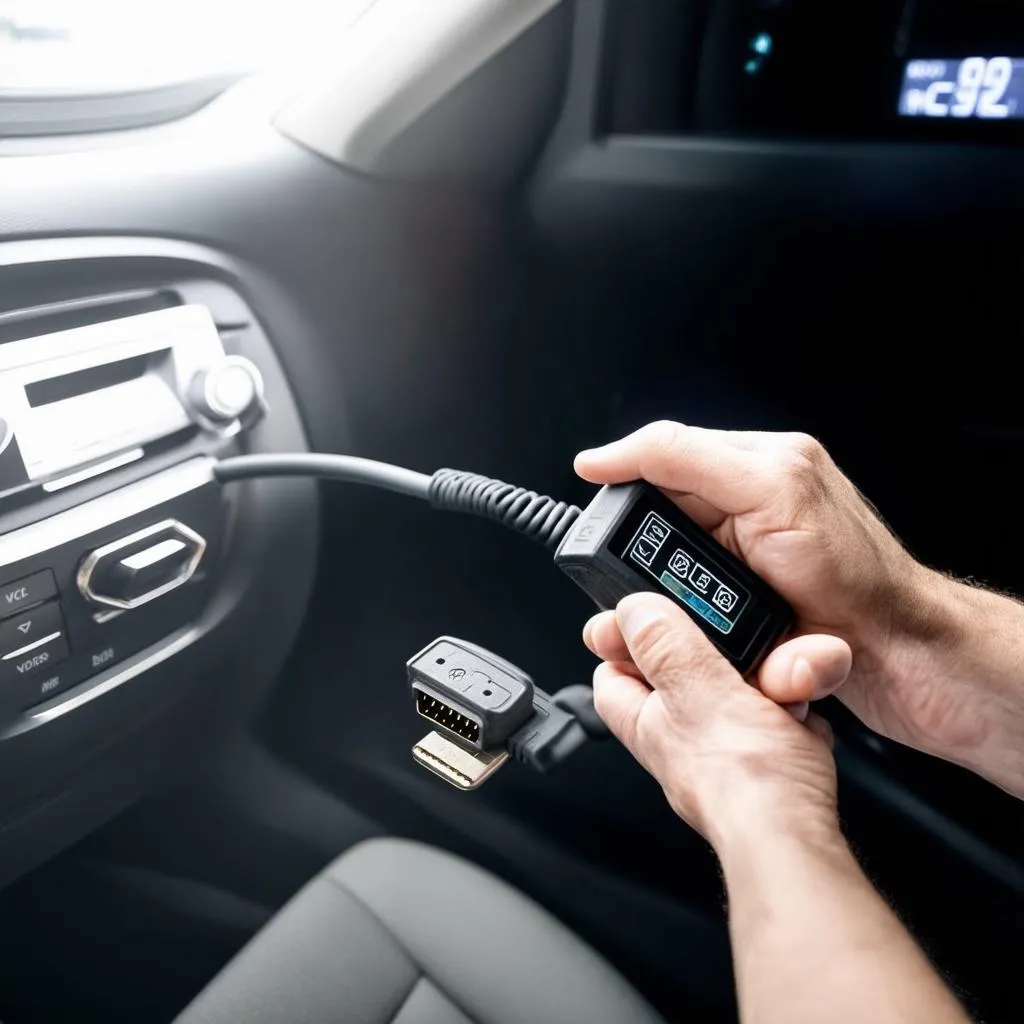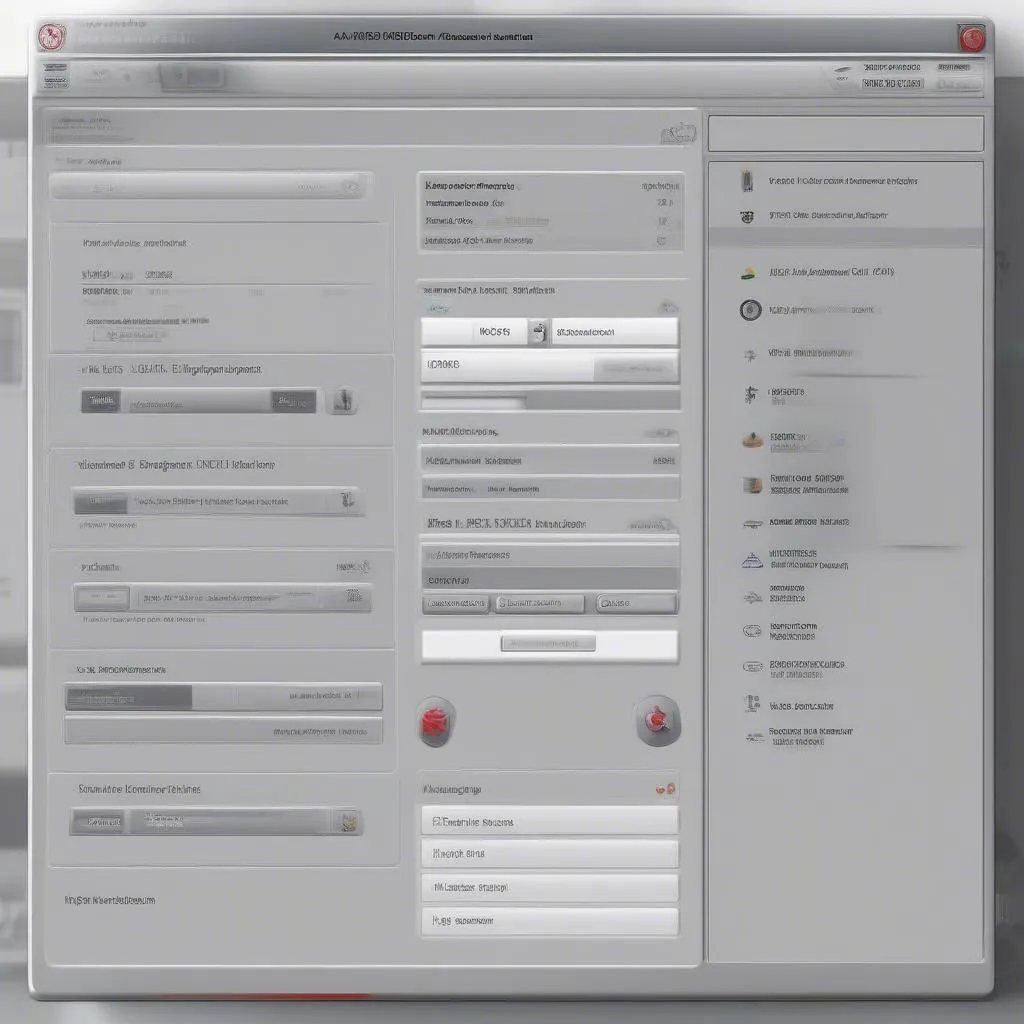VCDS OBD2 Bluetooth offers a convenient way to diagnose and troubleshoot your Volkswagen, Audi, Seat, or Skoda vehicle. This guide dives deep into the world of wireless VCDS, exploring its benefits, setup process, common uses, and answers to frequently asked questions.
Wireless diagnostic tools are revolutionizing the automotive repair industry. VCDS, renowned for its comprehensive diagnostic capabilities for VAG vehicles, has embraced this trend with Bluetooth OBD2 adapters. This combination allows technicians and car enthusiasts alike to perform advanced diagnostics without the constraints of physical cables. Using a VCDS OBD2 Bluetooth adapter opens a world of possibilities for understanding and resolving issues within your vehicle. But what exactly is it, and how can you leverage its power for efficient and effective vehicle maintenance?
Understanding VCDS and OBD2 Bluetooth
VCDS (VAG-COM Diagnostic System) is a powerful diagnostic software specifically designed for VAG vehicles (Volkswagen, Audi, Seat, and Skoda). It provides access to all the control modules within the vehicle, allowing for in-depth analysis, troubleshooting, and even coding changes. OBD2 (On-Board Diagnostics II) is a standardized system that allows external devices to communicate with a vehicle’s computer. Bluetooth technology enables wireless communication between your computer or mobile device and the vehicle’s OBD2 port via a Bluetooth OBD2 adapter. Combining VCDS with an OBD2 Bluetooth adapter creates a powerful and convenient wireless diagnostic solution. This setup offers greater flexibility and mobility when working on your car.
Setting Up Your VCDS OBD2 Bluetooth
Setting up your VCDS OBD2 Bluetooth system is a straightforward process. First, ensure you have a compatible VCDS software license and a reliable Bluetooth OBD2 adapter. Next, install the necessary drivers for the adapter on your computer or mobile device. Pair the adapter with your device via Bluetooth. Finally, launch the VCDS software and select the Bluetooth connection option. Once connected, you can access all the diagnostic functions of VCDS wirelessly. This allows for greater mobility and comfort during diagnostic sessions. Choosing a high-quality Bluetooth adapter is essential for a stable and reliable connection.
Common Uses of VCDS OBD2 Bluetooth
VCDS OBD2 Bluetooth offers a wide range of diagnostic and troubleshooting capabilities. You can read and clear fault codes, monitor live data streams from various sensors, perform output tests on actuators, and even access coding functions to customize certain features of your vehicle. Whether you’re a professional technician or a DIY enthusiast, VCDS empowers you to take control of your car’s maintenance and repairs. This allows you to identify potential problems early and take proactive measures to address them.
Similar to vcds with bluetooth obd2, this setup is perfect for diagnosing issues on the go. For instance, you can quickly scan for fault codes after experiencing a warning light on your dashboard, giving you valuable insights into the potential problem. This information can help you decide whether the issue requires immediate attention or can wait until a later time.
Troubleshooting Common VCDS OBD2 Bluetooth Issues
Occasionally, you might encounter connection problems or other issues when using VCDS OBD2 Bluetooth. Ensure your Bluetooth adapter is fully charged and within range of your device. Check for driver updates and ensure your VCDS software is up to date. If problems persist, try restarting both your device and the adapter. If you are still encountering difficulties, consider exploring ross tech vcds alternative for additional troubleshooting solutions. Consulting online forums and communities dedicated to VCDS can also provide valuable tips and solutions from experienced users.
Benefits of Using a Wireless Setup
The primary advantage of using a VCDS OBD2 Bluetooth setup is the freedom of movement it offers. You are no longer tethered to the vehicle by a cable, allowing you to move around freely while performing diagnostics. This is particularly helpful when working under the hood or inside the car. Imagine the convenience of diagnosing your car from the driver’s seat! This wireless setup also reduces clutter in the workspace, making the diagnostic process more efficient. This streamlined approach saves you time and energy, allowing you to focus on the task at hand.
Conclusion
VCDS OBD2 Bluetooth offers a powerful and convenient way to perform advanced diagnostics on VAG vehicles. Its wireless capability provides greater flexibility and mobility, while the comprehensive features of VCDS empower you to effectively troubleshoot and maintain your car. Invest in a quality VCDS OBD2 Bluetooth adapter today and experience the future of car diagnostics. Remember to keep your software and drivers up to date for optimal performance. This investment will empower you to take control of your car’s maintenance and ensure its longevity. For those looking to compare different diagnostic tools, check out bluedriver vs vcds. Understanding the differences can help you choose the best option for your needs. You might also be interested in learning about vcds mft for additional functionalities.
FAQ
- What are the system requirements for running VCDS with a Bluetooth adapter?
- Which Bluetooth OBD2 adapters are compatible with VCDS?
- Can I use VCDS OBD2 Bluetooth with my smartphone or tablet?
- How do I update the firmware on my Bluetooth OBD2 adapter?
- What should I do if my Bluetooth connection keeps dropping?
- Is there a range limitation for the Bluetooth connection?
- Where can I find support for VCDS OBD2 Bluetooth?
For support contact us via Whatsapp: +1 (641) 206-8880, Email: CARDIAGTECH[email protected] Or visit us at: 276 Reock St, City of Orange, NJ 07050, United States. We have a 24/7 customer support team.


